- Home
- Tom Clancy
Battle Ready Page 29
Battle Ready Read online
Page 29
And I wondered: “Might he make a move on Ali Mahdi, now that he has his enemy on his turf?”
I stepped outside to see if our troops were alert, then radioed our op center to make sure we had other troops moving around the area showing our strength.
When Aideed finally made his appearance, striding into our little company with a confident grin on his face, Ali Mahdi seemed close to paralysis from fear. But he quickly perked up when Aideed heartily embraced him like a long-lost friend.
After introductions and initial explanations from Bob Oakley, the two warlords made conciliatory speeches. Aideed emphasized the importance of the meeting after more than a year of separation and conflict, and made a couple of small, symbolic, starter proposals to help move the reconciliation along. He said: “We must end the division of the city by removing the green line”—the north-south line separating his turf from Ali Mahdi’s—“and we must end our propaganda war against each other.”
He closed with a hope that Somalia would again be a viable country.
This man was a formidable personality, I quickly realized—no penny-ante thug. He was articulate and statesmanlike, and obviously had no doubts that he was the natural leader of his country—he saw himself as nothing less than its George Washington—and that our purpose was to benefit his ambitions.
Ali Mahdi was not so impressive. His speech essentially confirmed and seconded Aideed’s.
IT WAS time for lunch. My little goat friend came out well cooked and cut into chunks on a platter. As this was passed around, I noticed one huge piece—the leg, from shank to hoof—sitting in the middle of the pile. Since I was at the end of the table, the last piece left was this gigantic goat drum-stick. Everyone was delighted when I pulled it off and began to gnaw away clumsily.
The lunch turned out to be very friendly . . . and useful.
Aideed proved especially helpful. It was obvious that he wanted to be seen as part of our operation . . . and to co-opt it to his benefit, if he could. Yet, he agreed to cooperate on security measures in his areas of Mogadishu and the outlying regions; and his advice was sound. He confirmed, for example, Oakley’s plan to enter new areas carefully. “If the militias and gangs know you are coming,” he told us, “they will get out of the way and won’t cause trouble.
“And make sure,” he went on, “that the first troops in arrive with food and medicine to give directly to the people. In this way they won’t see you as just another armed band to be feared, but will associate you with good things.”
We incorporated this advice into our planning.
A couple of “Oh, by the way” comments also emerged: one having to do with the formation of political committees, the other with the need for a national police force. I didn’t pay much attention to either of them at the time; but they greatly affected me later.
Oakley then sprang his seven-point agreement and pressed for acceptance.
The key points were as follows: Immediate and total cessation of hostilities and restoration of unity of the USC; immediate and total cessation of negative propaganda; and the breaking of the artificial lines in the capital.
In Somalia, negotiation means endless talk with minimal conclusion, with any agreement reached today up for discussion again tomorrow. Aideed and Ali Mahdi were thus reluctant to reach any conclusions; they wanted a series of further meetings.
Oakley pushed back. “We have press outside waiting for signs of progress,” he told them. “We need something positive and concrete to give a boost to our negotiations. We have to give the people something to hope for.”
After hemming and hawing, they agreed to three of the points. (Oakley succeeded in gaining complete agreement within a few days.)
Bob Johnston and I also insisted that technicals be taken off the roads of Mogadishu to prevent any problems with our forces; and both agreed.
We then left Aideed and Ali Mahdi to talk privately as we prepared for the press conference. Once that was over, Bob Johnston and I left, feeling confident that the first meeting with the warlords had gone exceptionally well, and that we had in Bob Oakley a great and politically astute partner. The security cooperation that came out of this meeting allowed us to reach our first phase objectives in seven days, rather than the anticipated thirty, and hastened completion of the next and most crucial phase.
NEXT ON our schedule was a meeting back at the embassy compound with Phil Johnston, the immensely capable, creative, and energetic head of the Humanitarian Operation Center (HOC). Johnston, the president of CARE, was on loan to the UN. HOC’s function was to coordinate the humanitarian effort in Somalia for that organization.
Like Oakley, Johnston was an open, can-do guy who focused on the mission and not on prerogatives. Also like Oakley, he was familiar with the military, understood how to work with us, and did not have to be convinced about setting up a solid coordination mechanism. He instantly embraced our plan to set up a Civil Military Operations Center to coordinate our efforts with his HOC, the NGOs, and the relief agencies, adding a suggestion that we co-locate the CMOC with his HOC.
This was a great idea. It was not only logical, but it made life easier for the NGOs and relief agencies, many of whom did not want to be closely associated with the military; and some, like the Red Cross, were actually forbidden association with the military by their charter.
One of our colonels, Kevin Kennedy, who was already involved in Operation Provide Relief and knew the humanitarian side of things extremely well, was designated as head of the CMOC. Two other superb officers, Colonel Bob MacPherson and Lieutenant Colonel Buddy Tillet, were added to the team, along with a handful of Civil Affairs personnel assigned to our task force.
Our meeting with Phil Johnston bore immediate fruit. The next day, we were able to successfully get off the first protected relief convoy. The first relief ships full of supplies landed and off-loaded in the port of Mogadishu the day after. These initial steps marked the actual start of our Phase II.64
FOR MANY reasons our relationships with NGOs and relief agencies proved to be mixed—and sometimes tense.
Coordinating these disparate organizations is often like herding cats. Their culture is sharply different from ours in the military—and often infused with a built-in dislike for us . . . rising more often than not out of the part they are called on to play in healing the devastation of armed conflict. Because they can easily be overwhelmed by the vast capability of the military, they fight fiercely to protect their identity and their own distinct contribution to the larger effort. And because they vary greatly in size, areas of expertise, charter, and sponsorship (religious, private, governmental, international, etc.), they often have a particular orientation about how or where they will function that may not be compatible with the kind of broadly coordinated plan the military likes to produce. More practically, their people do not respond to rigid direction and organizational structure, while their organizations often compete for resources and support. There is little natural tendency or interest to cooperate.
More than sixty relief agencies were operating in Somalia. Of these, several came out of the UN; the U.S. government’s Office of Foreign Disaster Assistance (OFDA) had on-the-ground presence in the form of its Disaster Assistance Response Team (DART); there was agency representation from several other countries; and there were many NGOs—all of them working under Phil Johnston’s able coordination mechanism. But coordination was at best still a difficult task.
To begin with, there was resentment of the military intervention. Many agencies feared the military would get credit for any success, even though they themselves had been working in Somalia long before the military. And some agencies opposed military participation at all in humanitarian relief, on the grounds that we did not understand how to do it and would screw up their efforts.
Relief workers also tended to develop views about who were the bad guys and who were the good . . . views as often as not based on partial, local experience and friendships, and not on the big p
icture. In a culture of blood feuds, it’s easy to take sides based on proximity. Armed with such biases, relief workers would strongly urge us to get rid of “their” particular enemies, and fight our efforts to bring everyone to the table. It was our view that Somalis themselves had to decide the who and the how of their governance. Many agencies thought they knew a better way . . . without realizing that in so doing they were treating the Somalis like children.
We had our biggest dispute with the agencies over the security mission. The agencies tended to expect us not only to improve general security for everybody, but to actually replace their hired guns and provide them with both full-time mission security for their organizations and full-time personal security. We could not possibly do that. Certainly not without major—and unacceptable—changes on their part.
For starters, there were well over five hundred facilities and residences in Mogadishu alone. Consolidating these would have made security feasible; but NGO culture put such consolidation out of the realm of discussion. The agencies also liked to maintain a “youthful” lifestyle, with a lot of free and easy movement around town at night for parties or other social events. In New York, L.A., London, or Paris, this kind of travel is perfectly safe. In Mogadishu, you’d be crazy to do that without armed protection; and they expected us to provide it. They refused to change their lifestyle, and we refused to provide individual protection. Tempers ran high.
At one point the UN threw an amazing costume party. They were disappointed when we did not accept their invitation to attend.
IF FARMERS and cowboys can be friends, so can relief workers and military. The great majority of relief workers are fine people who bravely do God’s work; yet their culture remains far apart from ours; they tend to see the world from another, though equally valid, perspective.
In the military, we often have little patience for “save the whales” types—especially when they seem timid and poorly organized. Yet neither do we normally have sufficient understanding of their special expertise, or of how actions that seem logical to us can be counterproductive to their efforts. I had already learned from past experience, and would learn again in Somalia, that we both had to work much harder to understand each other and coordinate our efforts better. The good news: In Somalia, our day-to-day experiences taught both the relief agencies and the military how to do exactly that—such functions as sending out convoys under security, manning and securing feeding stations, constructing facilities, vetting local hired security, and many others were accomplished through the selfless efforts of both sides.
AT THE END of the first day on the ground, General Johnston and I sat down to assess the situation before he made a report to the CINC. Both of us were encouraged. The meetings with Bob Oakley and Phil Johnston had gone extremely well. (“The Johnston and Oakley team is a definite winner,” I said to myself.) The general’s guidance was to stay close to both of them, making sure I coordinated the security, political, and humanitarian efforts directly with them. This was fine with me. It made perfect sense. He also asked me to communicate directly not only with his own staff but with the CENTCOM staff; and General Hoar later instructed me to extend my direct communications to the Joint Staff as well. All of this also made perfect sense, though it was highly unusual to grant such access to someone at my level, and meant they had significant trust in me. I was determined to use the access wisely and keep everyone involved well informed. In fact, it allowed us to avoid many potential misunderstandings.
After this wrap-up meeting, I got an update from my guys in the op center: They were making terrific progress setting up our command and control facilities. But reports from our units moving out into the tense streets of Mogadishu were giving me serious concern. There were too many heavily armed men out there. Our guys did see encouraging signs, however. Many people waved and smiled when they saw U.S. Marines.
THE NEXT DAY turned out to be less positive.
To start things off, the bad guys decided to test us quickly, to see if we were made of sterner stuff than the UN troops, whose rules of engagement had made strong response to provocation close to impossible.
We had put up both fixed-wing aircraft and helicopters over the city and its immediate surroundings as a show of force and to provide a source of intelligence, reconnaissance, and cover as we began reaching out beyond the city. That morning, two of these helicopters were fired on by technicals. Though the helos immediately destroyed them, we were not happy that the bad guys were willing to take us on. That was of course a big mistake on their part. The quick and decisive response of the helos demonstrated that we meant business and would not tolerate attacks.
We were not the UN.
This event sparked a widely quoted statement to the press: “Things have changed in Mogadishu,” I told them. “Wyatt Earp is in town.”
The key meeting that day was with the special representative of the UN Secretary-General, Ismat Kittani, a veteran Iraqi diplomat and senior member of the UN Secretariat, and the military commander of the UN forces in UNOSOM, Pakistani General Mohamed Shaheen. Bob Oakley accompanied us to the UN headquarters, located in a villa in the center of the city that was decidedly more comfortable than our own gutted embassy. The meeting went badly.
Inside the headquarters, the air was thick with resentment. Kittani, confrontational from the start, was clearly infuriated that the U.S. military had been called to pick up after UNOSOM’s failure. And if we then managed to achieve positive results, UNOSOM’s failure would seem that much greater. Up until that moment, I’d imagined that the enormous size of the job ahead would make taking credit for success easy for everybody. There was, after all, plenty of work for everybody, including UNOSOM. And if we all together succeeded in making life better for the people who were actually suffering, then we could all go home happy. But for the first time I began to realize how far apart we were from the UN’s concept of what had to be done.
Several points of contention emerged.
In general: If the U.S. wanted to take on the job of fixing Somalia, fine. As far as the UN was concerned, let the U.S. do the whole thing.
Specifically: The UN did not intend to take over the mission from us anytime soon; neither did UNOSOM intend to work with us beyond a minimal coordination effort to de-conflict our forces; and they were very reluctant to honor any agreements we made or programs we put in place. We proposed setting up a Somali-led and -manned police force, for example. But UNOSOM was opposed—for all practical purposes—to Somalis leading anything important. They made it equally clear that our agreements with the factions would in no way be binding on UNOSOM.
As a final indignity, Kittani demanded an operational name change. For some reason known only to him, and perhaps to the trackless depths of the UN bureaucracy, our operational name at that point—“Combined Task Force,” the standard military title given to coalition commands—was unacceptable to the UN; and we would have to change it to “Unified Task Force” (UNITAF).
Such a name change is in fact no big deal . . . such things have little practical importance. But in demanding it, Kittani’s arrogance stuck in our craw, and did not help relations that were already starting to get frayed. Still, we did not want to do anything to give the UN an excuse for accusing us of not cooperating, nor did we want to harm efforts to eventually hand the mission back to them; so we accepted the change.
Kittani never let up his hostility, and never lost an opportunity to obstruct our work—even when his obstructions harmed Somalis.
Some time later, Bob Oakley and I worked out a plan with the UN High Commissioner for Refugees, Sadako Ogata, for resettling in Somalia the 350,000 Somali refugees then in Kenya. To the immense chagrin of Madame Ogata (whose job was to try to resettle the almost one million refugees scattered around the region and the half-million displaced persons in the country), the UN rejected our plan—without substituting another; they simply stonewalled. This kind of thing happened all too often.
In time, I began to learn
some of the reasons behind the UN obstruction policy . . . though I still believe they were wrong not to try to work more closely with us. Cooperation and coordination would have helped all of us—not least the Somalis. But I now see that their hesitations were based on genuine fears. Primarily, they were afraid they’d be left holding the bag if chaos and anarchy returned after the eight-hundred-pound gorilla left town. A good point: Chaos and anarchy returned after we left.
As one UN official explained to me: “Boutros-Ghali is afraid you’ll hand him a poisoned apple. He won’t take the mission from you until he has wrangled as much as he can from the U.S.”
What they seemed to want from us, then, was to clean up the country and leave it in a condition that would greatly lessen the ability of the warlords to wage factional war. A worthy goal. But hardly possible without total war.
The big demand from Kittani and Boutros-Ghali was total disarmament of all the Somalis.
Thanks a lot!
There was simply no way we—or anyone—could disarm the Somalis except at the cost of enormous bloodshed. Weapons were everywhere, and most were portable and easily hidden.
This issue became a major bone of contention between the U.S. and UN leadership.
Our thought had been to establish a secure environment, while the UN simultaneously did the things they did best—working on peace agreements, setting up voluntary disarmament programs, reinstituting a national police force, resettling refugees and displaced persons, and eventually assuming the security mission. But it was evident from this first meeting that they would do nothing beyond sitting there without a new mandate and Security Council resolution.
Up to this point, everybody had made it clear that we were all working together. “Hey, we’re all one team” was the constant message. “We have one objective. Let’s figure out how to work together.” Suddenly, we’d hit a wall. The idea that this would be a kick-start operation of short duration was fading fast. It now looked like we had inherited the whole problem.

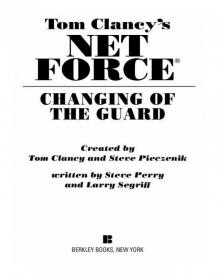 Changing of the Guard
Changing of the Guard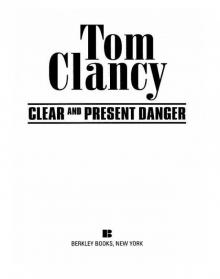 Clear and Present Danger
Clear and Present Danger Hounds of Rome
Hounds of Rome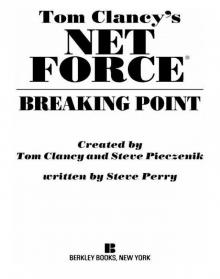 Breaking Point
Breaking Point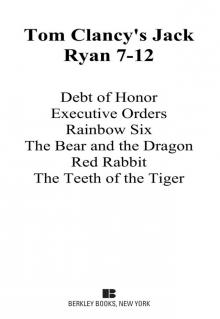 Tom Clancy's Jack Ryan Books 7-12
Tom Clancy's Jack Ryan Books 7-12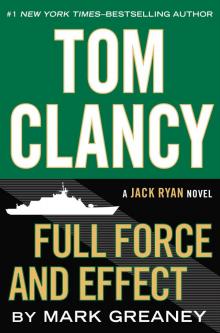 Full Force and Effect
Full Force and Effect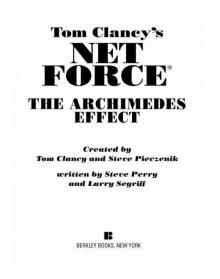 The Archimedes Effect
The Archimedes Effect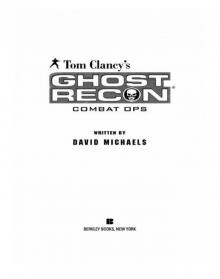 Combat Ops
Combat Ops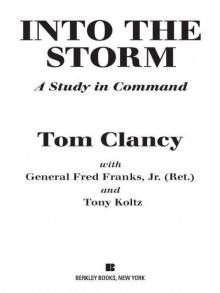 Into the Storm: On the Ground in Iraq
Into the Storm: On the Ground in Iraq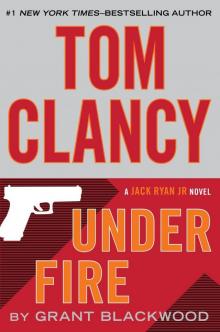 Under Fire
Under Fire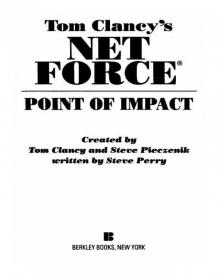 Point of Impact
Point of Impact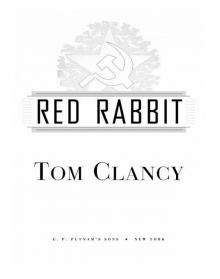 Red Rabbit
Red Rabbit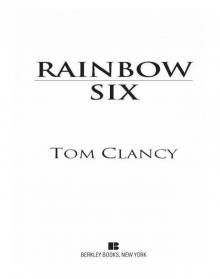 Rainbow Six
Rainbow Six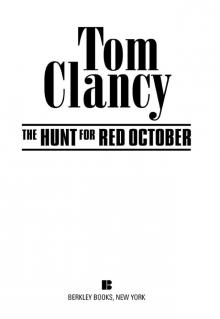 The Hunt for Red October
The Hunt for Red October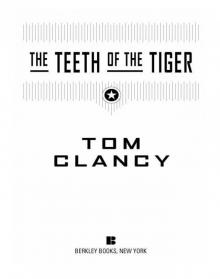 The Teeth of the Tiger
The Teeth of the Tiger Conviction (2009)
Conviction (2009)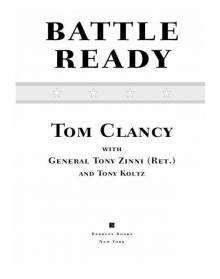 Battle Ready
Battle Ready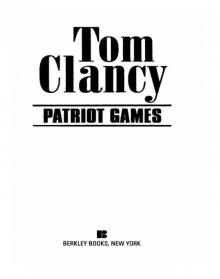 Patriot Games
Patriot Games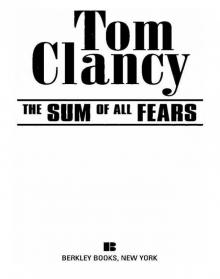 The Sum of All Fears
The Sum of All Fears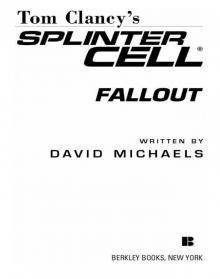 Fallout (2007)
Fallout (2007)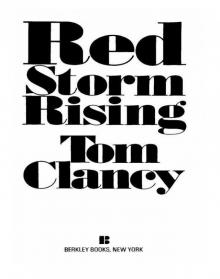 Red Storm Rising
Red Storm Rising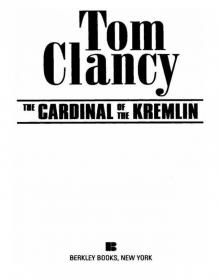 The Cardinal of the Kremlin
The Cardinal of the Kremlin Executive Orders
Executive Orders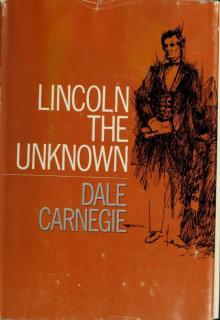 Lincoln, the unknown
Lincoln, the unknown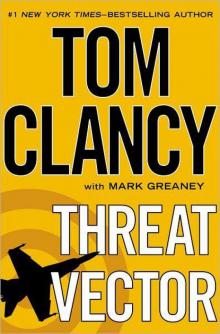 Threat Vector
Threat Vector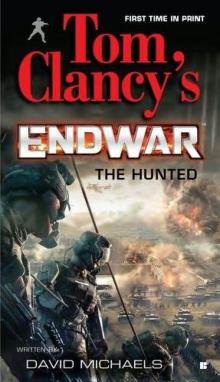 The Hunted
The Hunted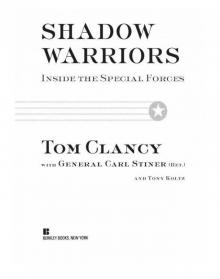 Shadow Warriors: Inside the Special Forces
Shadow Warriors: Inside the Special Forces End Game
End Game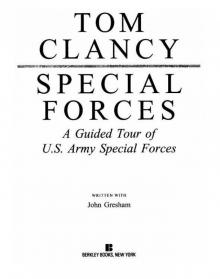 Special Forces: A Guided Tour of U.S. Army Special Forces
Special Forces: A Guided Tour of U.S. Army Special Forces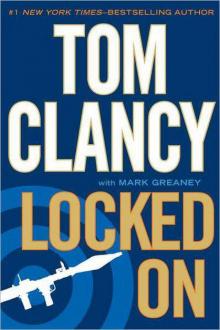 Locked On
Locked On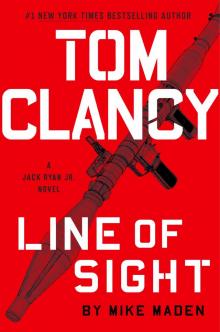 Line of Sight
Line of Sight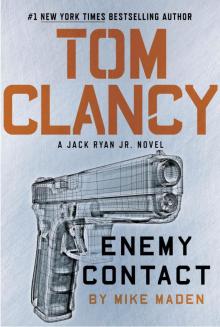 Tom Clancy Enemy Contact - Mike Maden
Tom Clancy Enemy Contact - Mike Maden Fighter Wing: A Guided Tour of an Air Force Combat Wing
Fighter Wing: A Guided Tour of an Air Force Combat Wing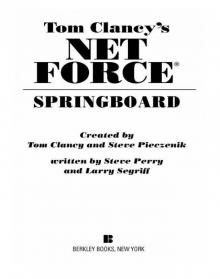 Springboard
Springboard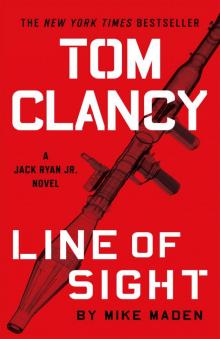 Line of Sight - Mike Maden
Line of Sight - Mike Maden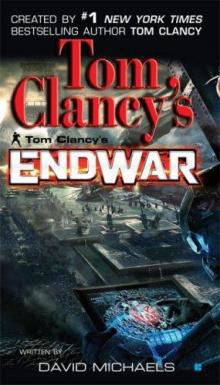 EndWar
EndWar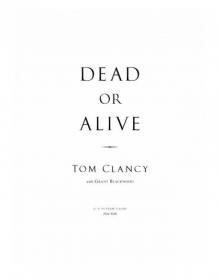 Dead or Alive
Dead or Alive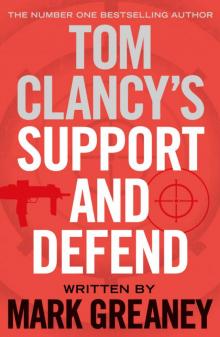 Tom Clancy Support and Defend
Tom Clancy Support and Defend Checkmate
Checkmate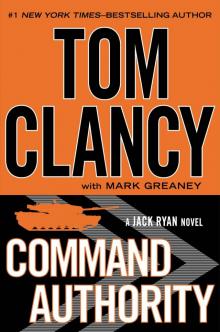 Command Authority
Command Authority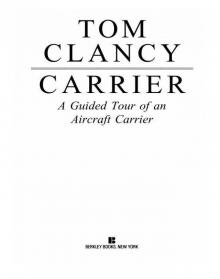 Carrier: A Guided Tour of an Aircraft Carrier
Carrier: A Guided Tour of an Aircraft Carrier Blacklist Aftermath
Blacklist Aftermath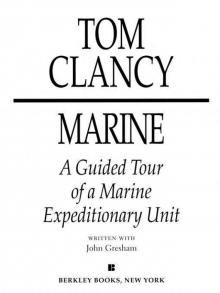 Marine: A Guided Tour of a Marine Expeditionary Unit
Marine: A Guided Tour of a Marine Expeditionary Unit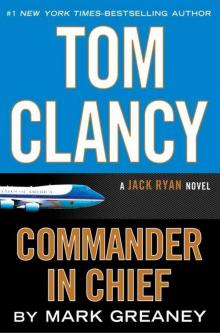 Commander-In-Chief
Commander-In-Chief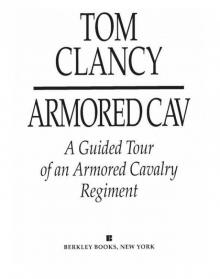 Armored Cav: A Guided Tour of an Armored Cavalry Regiment
Armored Cav: A Guided Tour of an Armored Cavalry Regiment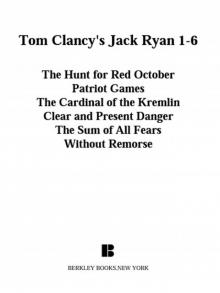 Tom Clancy's Jack Ryan Books 1-6
Tom Clancy's Jack Ryan Books 1-6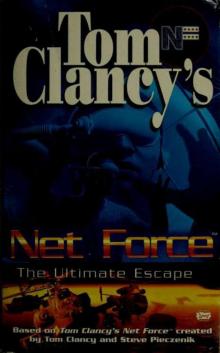 The Ultimate Escape
The Ultimate Escape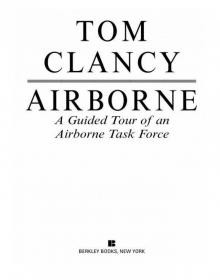 Airborne: A Guided Tour of an Airborne Task Force
Airborne: A Guided Tour of an Airborne Task Force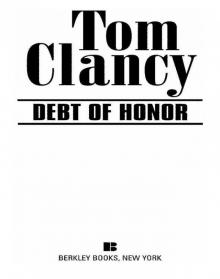 Debt of Honor
Debt of Honor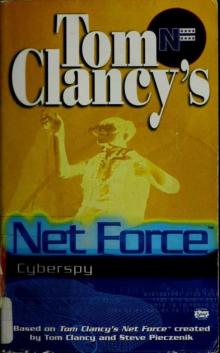 Cyberspy
Cyberspy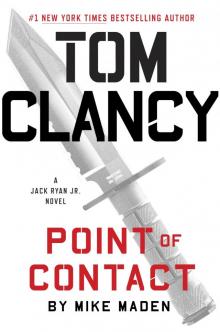 Point of Contact
Point of Contact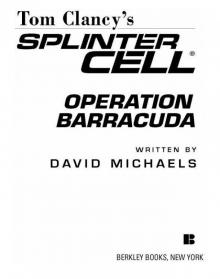 Operation Barracuda (2005)
Operation Barracuda (2005)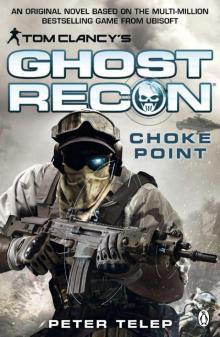 Choke Point
Choke Point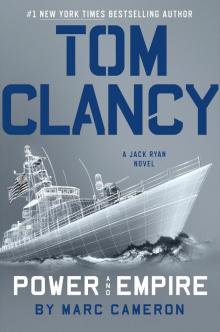 Power and Empire
Power and Empire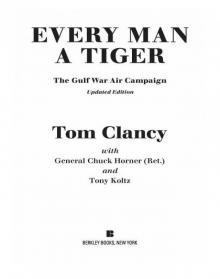 Every Man a Tiger: The Gulf War Air Campaign
Every Man a Tiger: The Gulf War Air Campaign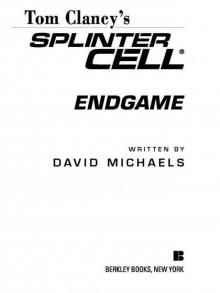 Endgame (1998)
Endgame (1998)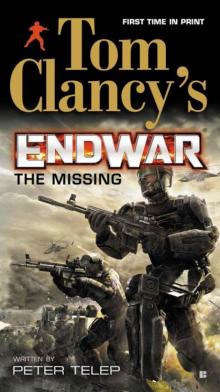 EndWar: The Missing
EndWar: The Missing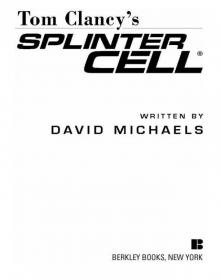 Splinter Cell (2004)
Splinter Cell (2004)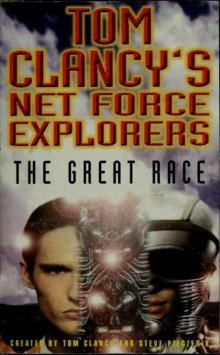 The Great Race
The Great Race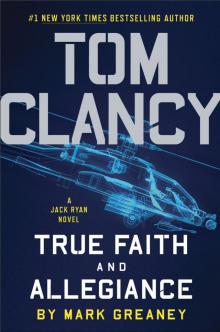 True Faith and Allegiance
True Faith and Allegiance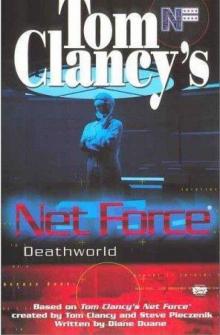 Deathworld
Deathworld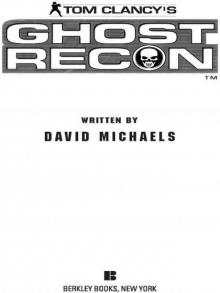 Ghost Recon (2008)
Ghost Recon (2008)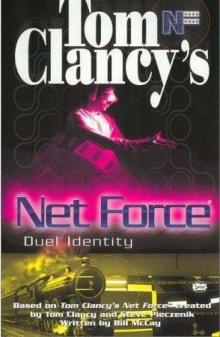 Duel Identity
Duel Identity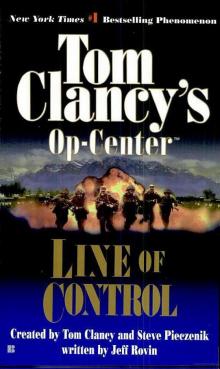 Line of Control o-8
Line of Control o-8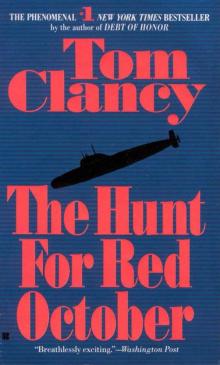 The Hunt for Red October jr-3
The Hunt for Red October jr-3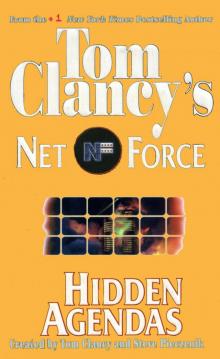 Hidden Agendas nf-2
Hidden Agendas nf-2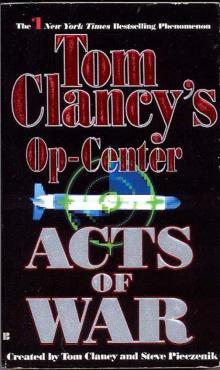 Acts of War oc-4
Acts of War oc-4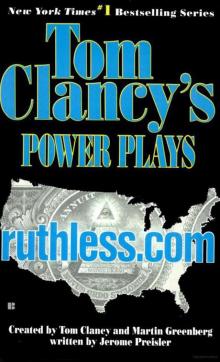 Ruthless.Com pp-2
Ruthless.Com pp-2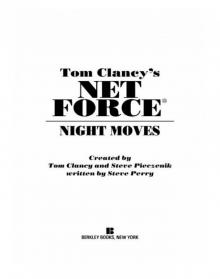 Night Moves
Night Moves The Hounds of Rome - Mystery of a Fugitive Priest
The Hounds of Rome - Mystery of a Fugitive Priest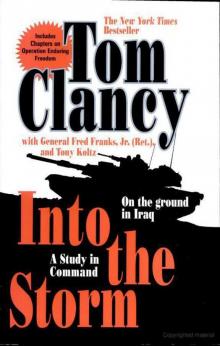 Into the Storm: On the Ground in Iraq sic-1
Into the Storm: On the Ground in Iraq sic-1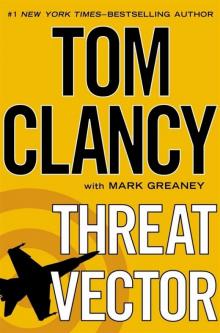 Threat Vector jrj-4
Threat Vector jrj-4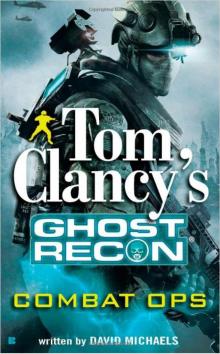 Combat Ops gr-2
Combat Ops gr-2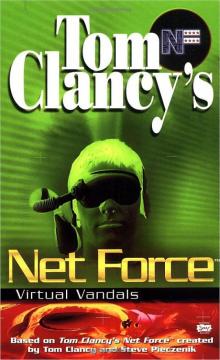 Virtual Vandals nfe-1
Virtual Vandals nfe-1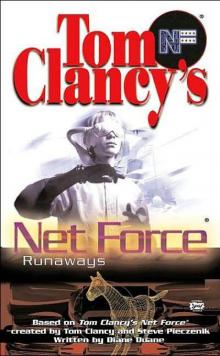 Runaways nfe-16
Runaways nfe-16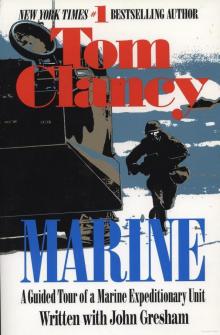 Marine: A Guided Tour of a Marine Expeditionary Unit tcml-4
Marine: A Guided Tour of a Marine Expeditionary Unit tcml-4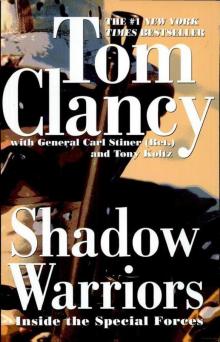 Shadow Warriors: Inside the Special Forces sic-3
Shadow Warriors: Inside the Special Forces sic-3 Jack Ryan Books 1-6
Jack Ryan Books 1-6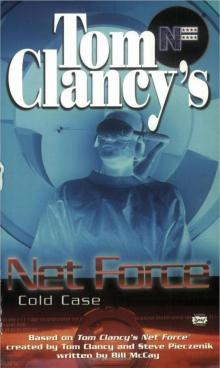 Cold Case nfe-15
Cold Case nfe-15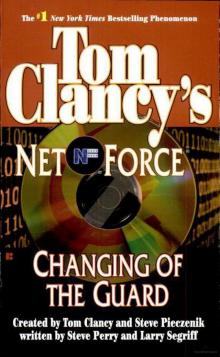 Changing of the Guard nf-8
Changing of the Guard nf-8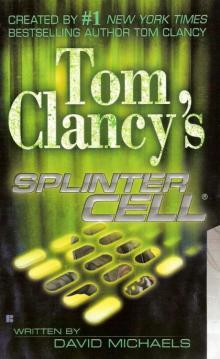 Splinter Cell sc-1
Splinter Cell sc-1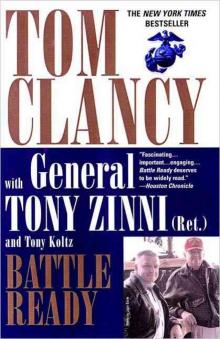 Battle Ready sic-4
Battle Ready sic-4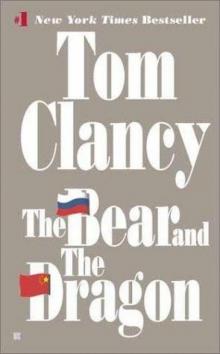 The Bear and the Dragon jrao-11
The Bear and the Dragon jrao-11 Fighter Wing: A Guided Tour of an Air Force Combat Wing tcml-3
Fighter Wing: A Guided Tour of an Air Force Combat Wing tcml-3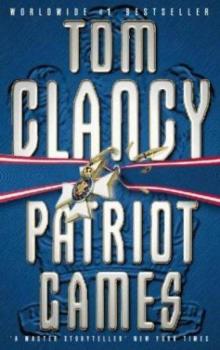 Patriot Games jr-1
Patriot Games jr-1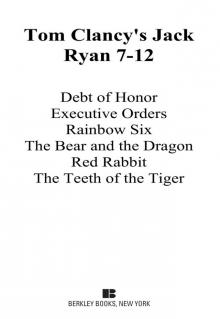 Jack Ryan Books 7-12
Jack Ryan Books 7-12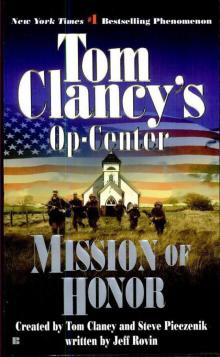 Mission of Honor o-9
Mission of Honor o-9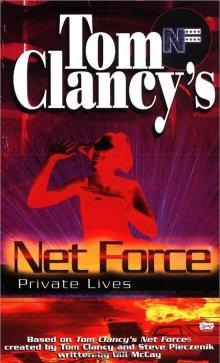 Private Lives nfe-9
Private Lives nfe-9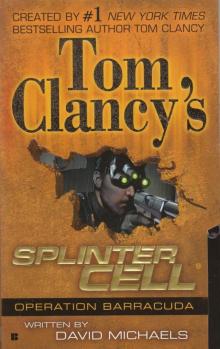 Operation Barracuda sc-2
Operation Barracuda sc-2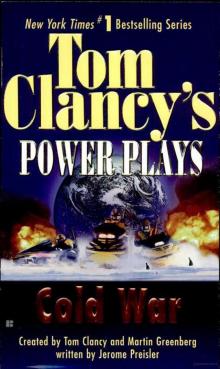 Cold War pp-5
Cold War pp-5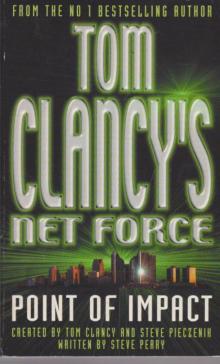 Point of Impact nf-5
Point of Impact nf-5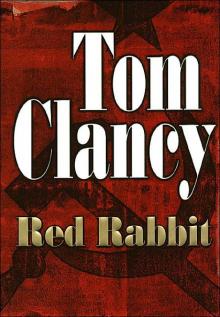 Red Rabbit jr-9
Red Rabbit jr-9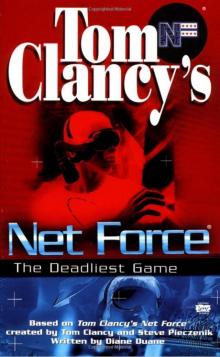 The Deadliest Game nfe-2
The Deadliest Game nfe-2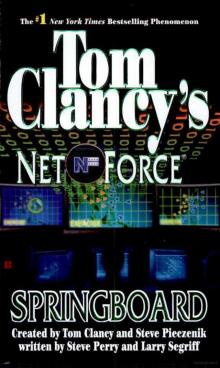 Springboard nf-9
Springboard nf-9 Safe House nfe-10
Safe House nfe-10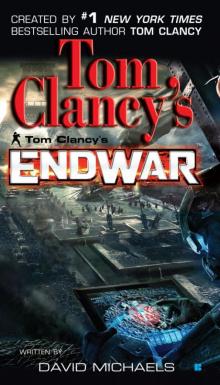 EndWar e-1
EndWar e-1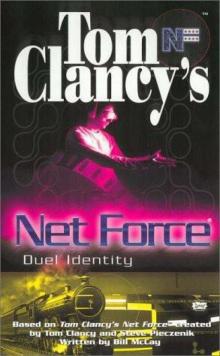 Duel Identity nfe-12
Duel Identity nfe-12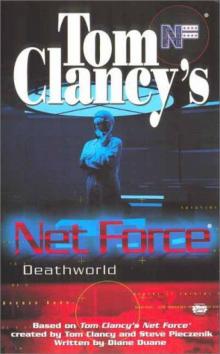 Deathworld nfe-13
Deathworld nfe-13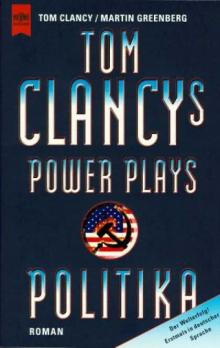 Politika pp-1
Politika pp-1 Rainbow Six jr-9
Rainbow Six jr-9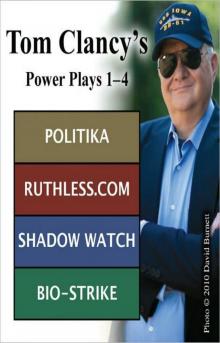 Tom Clancy's Power Plays 1 - 4
Tom Clancy's Power Plays 1 - 4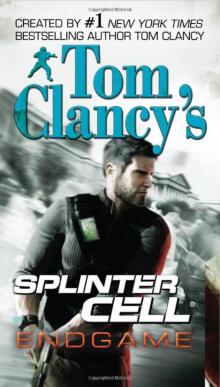 Endgame sc-6
Endgame sc-6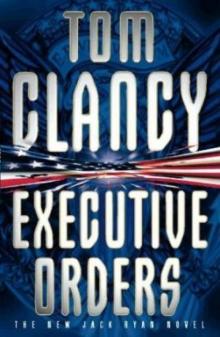 Executive Orders jr-7
Executive Orders jr-7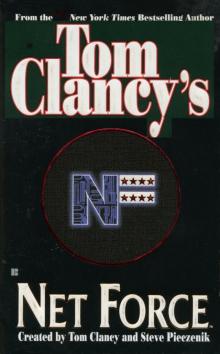 Net Force nf-1
Net Force nf-1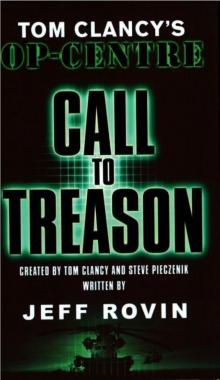 Call to Treason o-11
Call to Treason o-11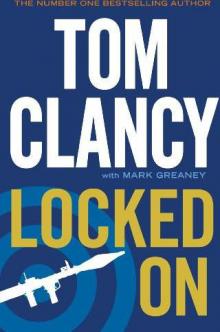 Locked On jrj-3
Locked On jrj-3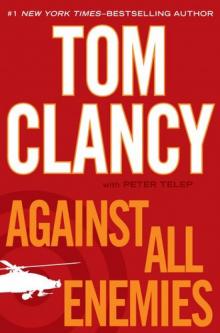 Against All Enemies
Against All Enemies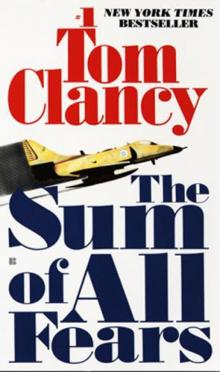 The Sum of All Fears jr-7
The Sum of All Fears jr-7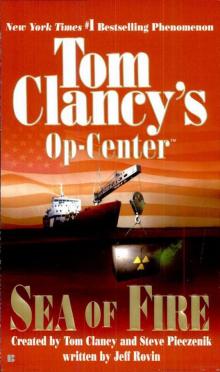 Sea of Fire o-10
Sea of Fire o-10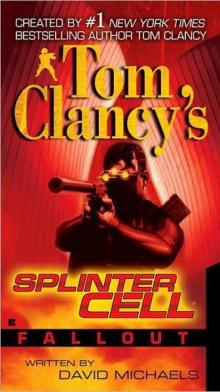 Fallout sc-4
Fallout sc-4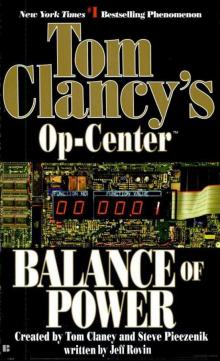 Balance of Power o-5
Balance of Power o-5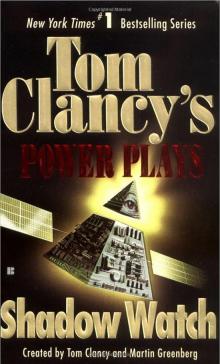 Shadow Watch pp-3
Shadow Watch pp-3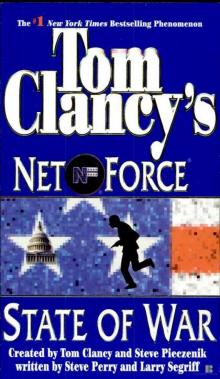 State of War nf-7
State of War nf-7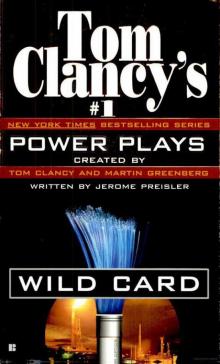 Wild Card pp-8
Wild Card pp-8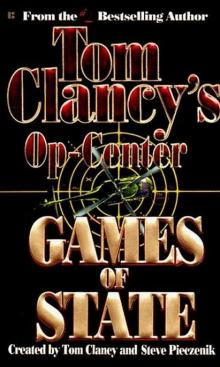 Games of State o-3
Games of State o-3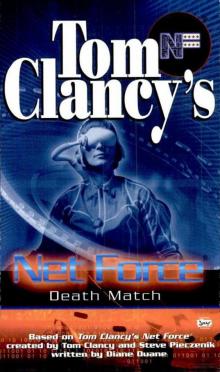 Death Match nfe-18
Death Match nfe-18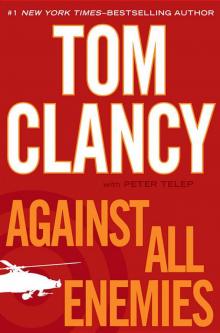 Against All Enemies mm-1
Against All Enemies mm-1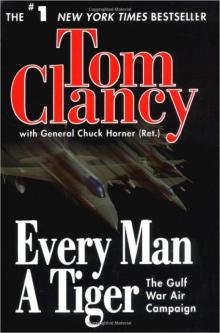 Every Man a Tiger: The Gulf War Air Campaign sic-2
Every Man a Tiger: The Gulf War Air Campaign sic-2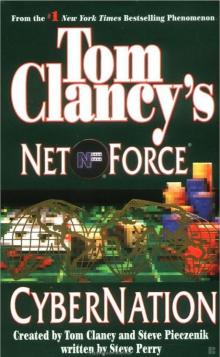 Cybernation nf-6
Cybernation nf-6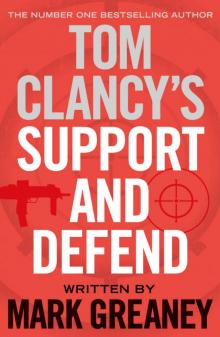 Support and Defend
Support and Defend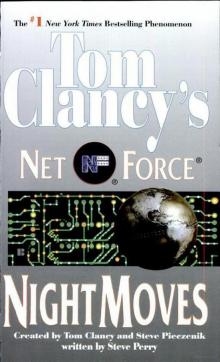 Night Moves nf-3
Night Moves nf-3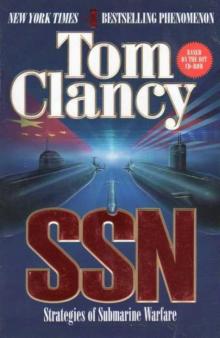 SSN
SSN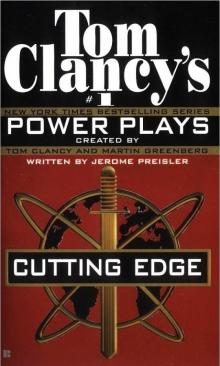 Cutting Edge pp-6
Cutting Edge pp-6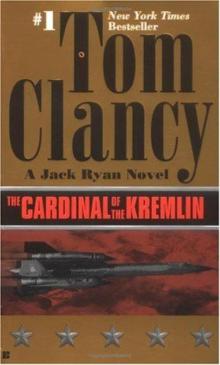 The Cardinal of the Kremlin jrao-5
The Cardinal of the Kremlin jrao-5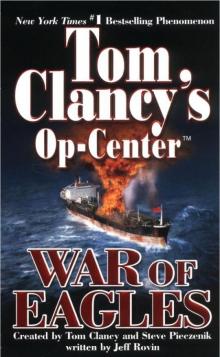 War of Eagles o-12
War of Eagles o-12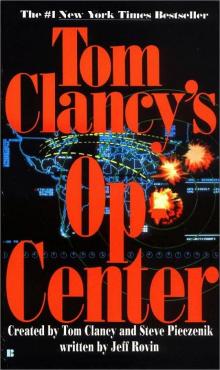 Op-Center o-1
Op-Center o-1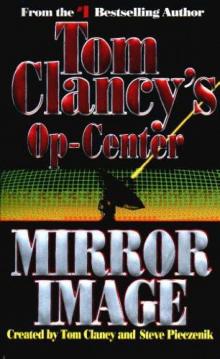 Mirror Image o-2
Mirror Image o-2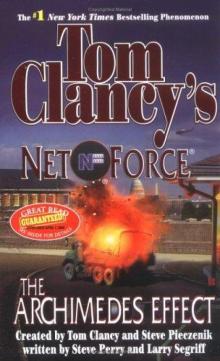 The Archimedes Effect nf-10
The Archimedes Effect nf-10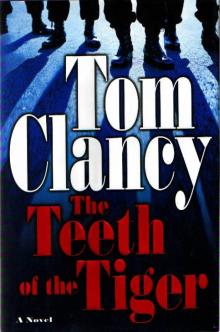 Teeth of the Tiger jrj-1
Teeth of the Tiger jrj-1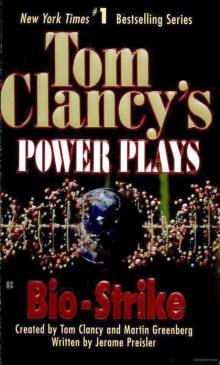 Bio-Strike pp-4
Bio-Strike pp-4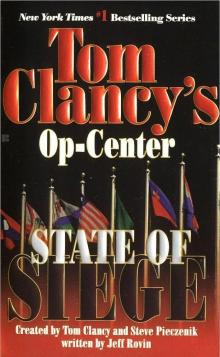 State of Siege o-6
State of Siege o-6 Debt of Honor jr-6
Debt of Honor jr-6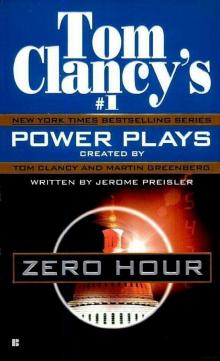 Zero Hour pp-7
Zero Hour pp-7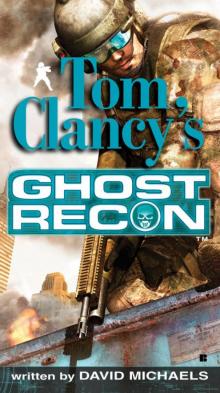 Ghost Recon gr-1
Ghost Recon gr-1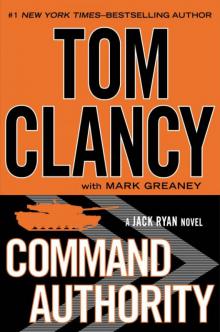 Command Authority jr-10
Command Authority jr-10 Tom Clancy's Power Plays 5 - 8
Tom Clancy's Power Plays 5 - 8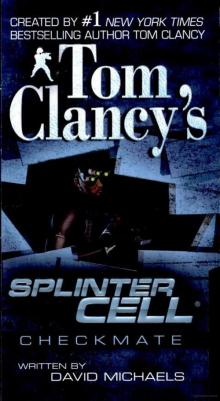 Checkmate sc-3
Checkmate sc-3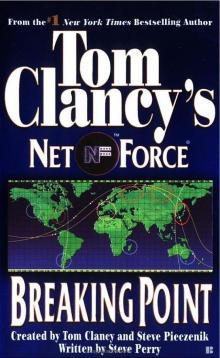 Breaking Point nf-4
Breaking Point nf-4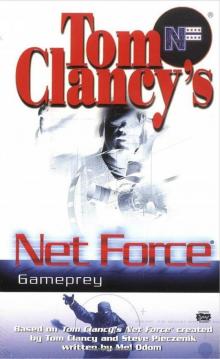 Gameprey nfe-11
Gameprey nfe-11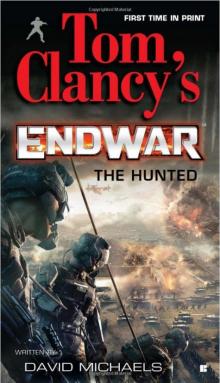 The Hunted e-2
The Hunted e-2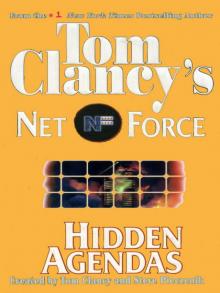 Hidden Agendas
Hidden Agendas Divide and Conquer o-7
Divide and Conquer o-7